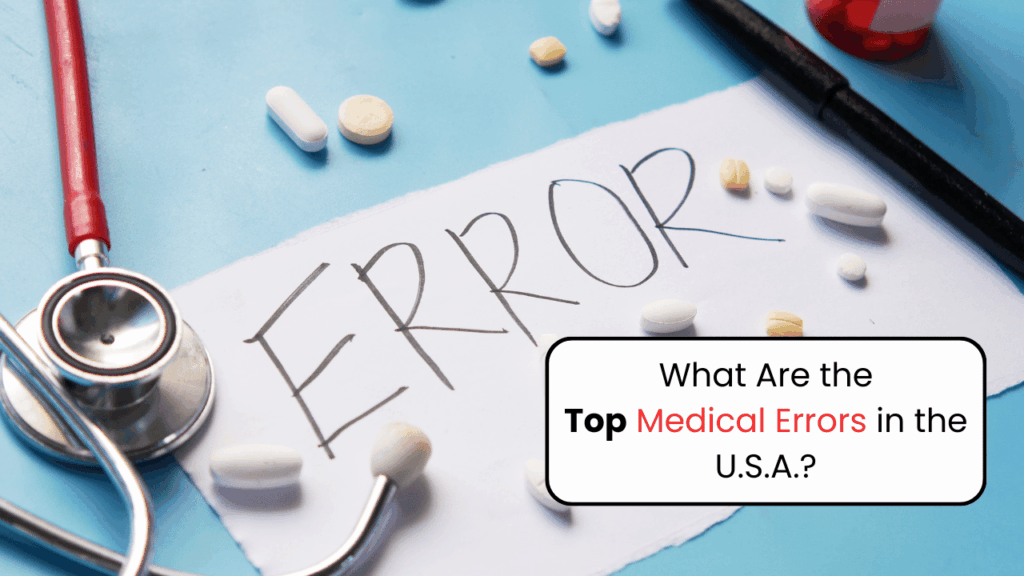Medical errors remain a serious and often overlooked issue in the U.S. healthcare system. Broadly defined, they include preventable adverse outcomes that result from medical care itself, whether through mistakes in diagnosis, prescribing, surgery, or system failures.
A Johns Hopkins study made headlines by suggesting that medical errors are the third leading cause of death in the United States, claiming more than 250,000 lives each year. Errors happen in hospitals, clinics, nursing homes, and even outpatient centers. The scale of the problem makes one thing clear: systemic improvements are urgently needed.
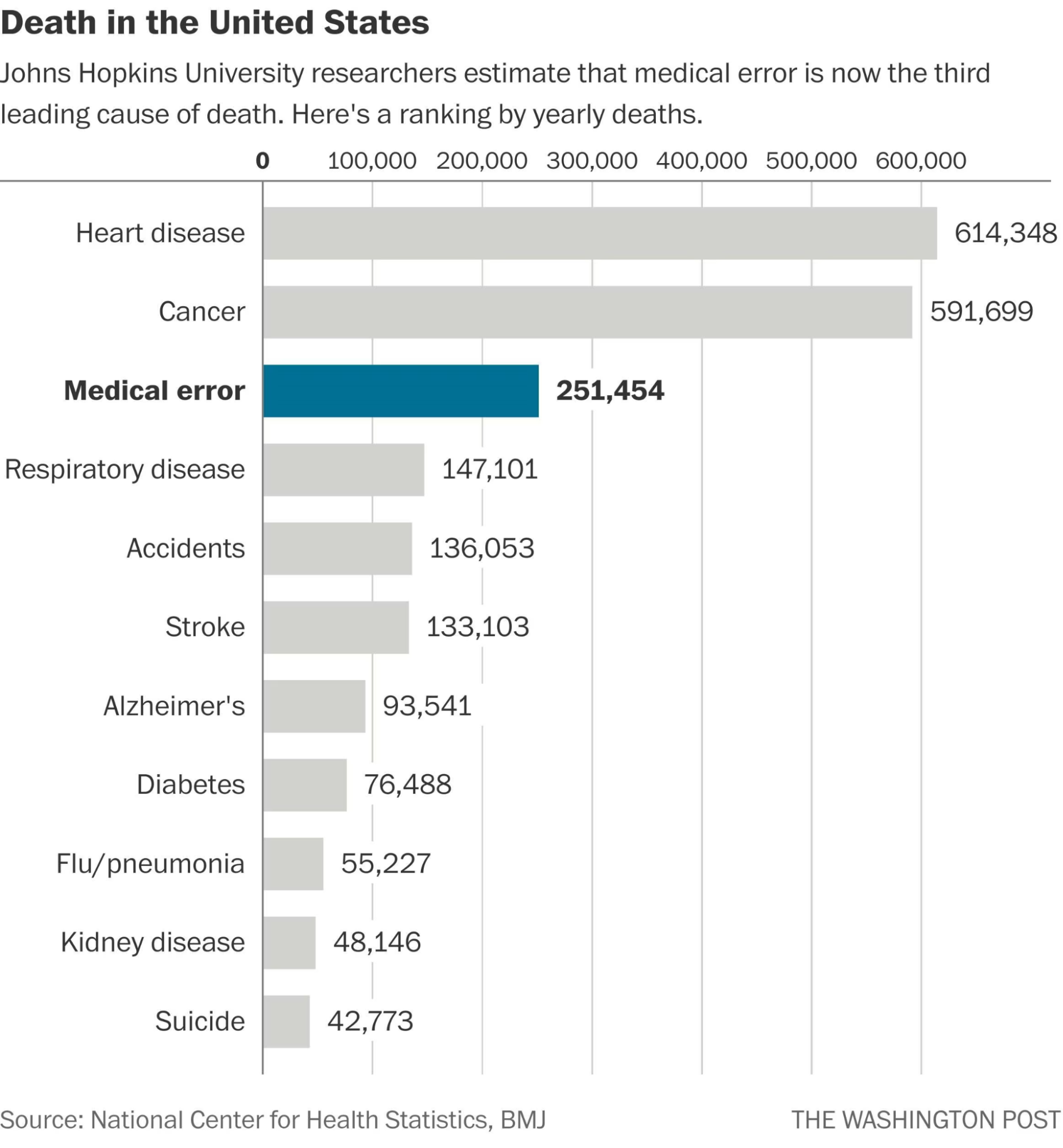
1. Misdiagnosis and Delayed Diagnosis
Few mistakes are as damaging as a misdiagnosis. Roughly 12 million Americans are affected every year, and research links these errors to between 40,000 and 80,000 deaths annually.
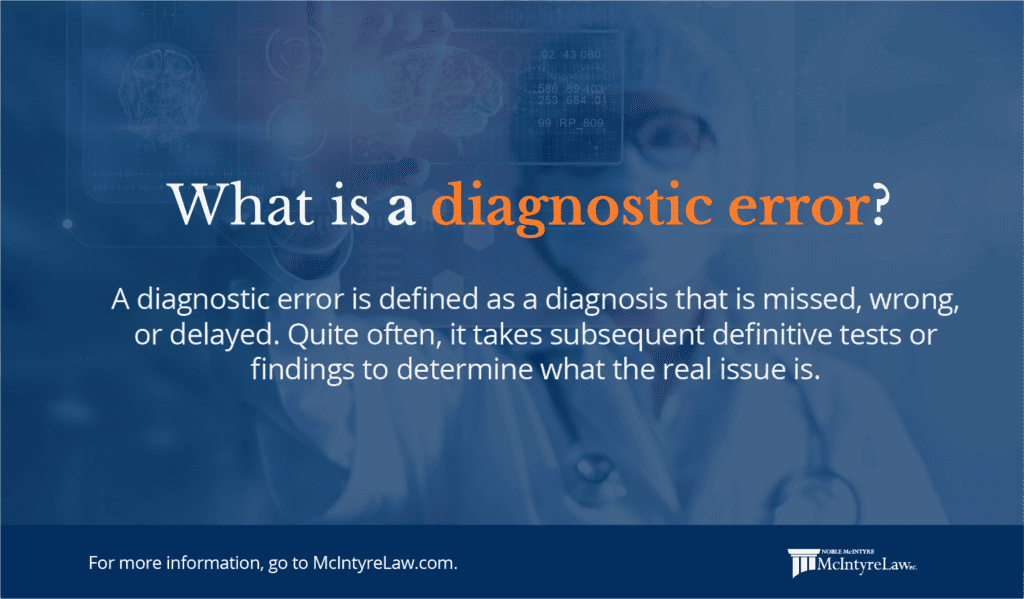
The danger lies in lost time. A cancer that could have been treated at stage one might only be caught at stage three. A patient with sepsis may deteriorate rapidly if treatment is delayed even a few hours. Cardiac conditions such as strokes or heart attacks are also frequently mistaken for less serious problems like indigestion or migraines.
Failure to detect early-stage cancers, such as breast or colon cancer, is among the most common reasons for malpractice lawsuits. These cases highlight both the human toll and the financial cost of diagnostic mistakes.
Why do these errors happen? Often, it comes down to cognitive shortcuts. Doctors may anchor too quickly on a likely diagnosis, close the case too soon, or fail to connect information across providers. Communication gaps and missed test follow-ups also play a big role.
Solutions include more systematic follow-up, encouraging second opinions, and applying new tools like AI-based diagnostic support, which can catch patterns a busy clinician might miss. Patients can also help by asking their providers, “What else could this be?”
2. Medication Errors
Every day, medications save lives, but they also represent one of the most common sources of preventable harm. The FDA estimates that at least one death per day in the U.S. is caused by medication errors, and over 1.3 million people are injured annually.
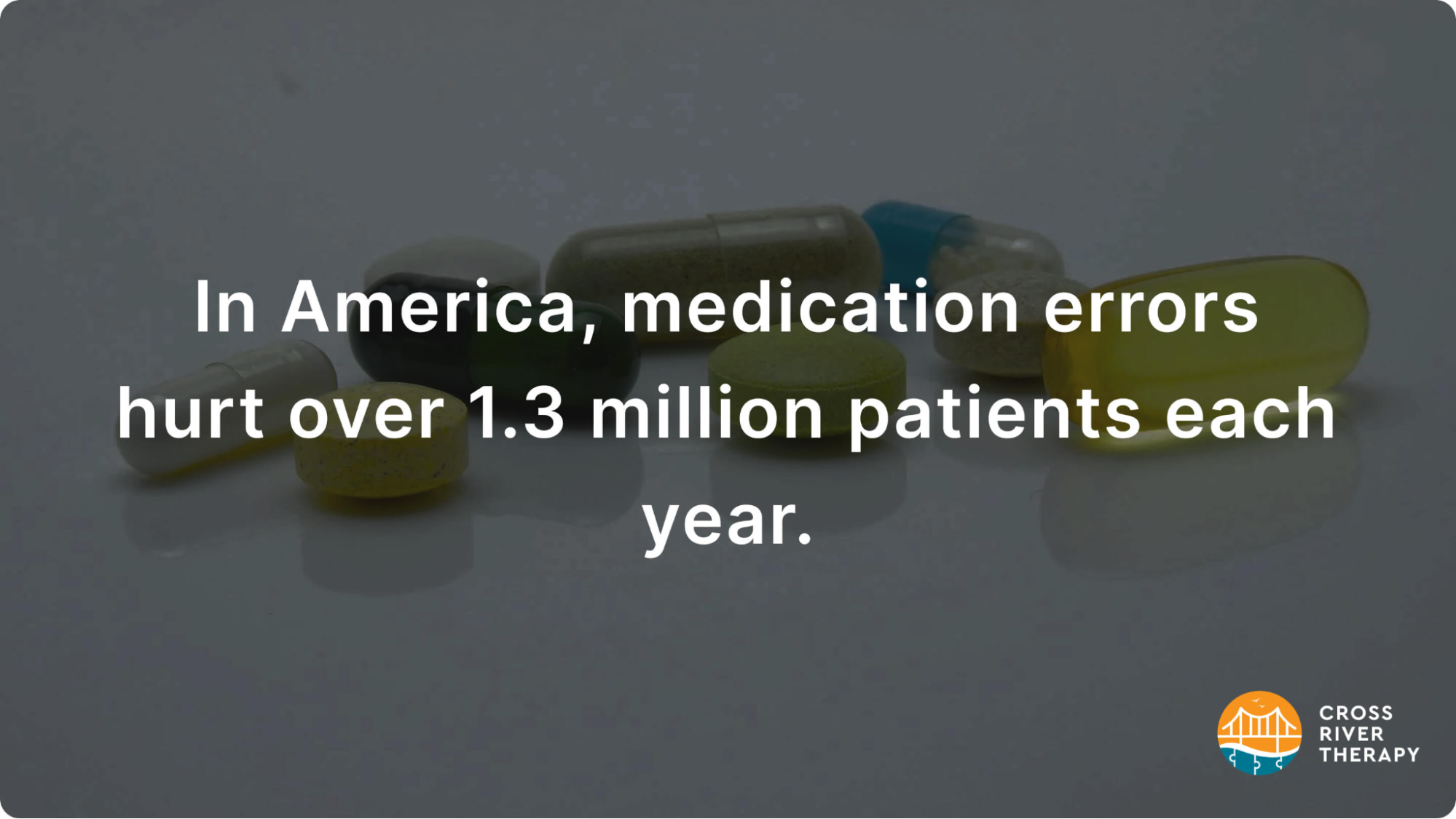
These errors can occur anywhere: in the doctor’s office when the prescription is written, at the pharmacy when it’s filled, or at the bedside when it’s administered. Sometimes the wrong drug is chosen, the dose is off, a dangerous drug interaction is overlooked, or the medication is given to the wrong patient entirely.
The outcomes range from ineffective treatment to severe allergic reactions, organ failure, or death. Seniors and patients managing multiple prescriptions are particularly at risk, since complex regimens leave more room for mistakes.
Underlying causes include miscommunication among providers, confusing drug names or packaging, and hard-to-read handwritten prescriptions.
Healthcare systems have introduced fixes like electronic prescribing, barcode verification, and pharmacist cross-checks. But patients also have a role: keeping a current list of all medications, asking questions about side effects, and verifying instructions before starting a new drug.
3. Surgical Errors
Surgery carries inherent risks, but some mistakes are entirely preventable and often catastrophic.
“Wrong-site” surgeries, operations performed on the wrong patient, instruments left inside the body, or anesthesia errors are among the most serious. Alarmingly, research suggests wrong-site surgeries still occur about 40 times per week in the U.S., despite being considered “never events.”
These errors usually result from breakdowns in planning, communication, or oversight, combined with the pressures of high-stakes surgical environments. Fatigue among surgical teams is another contributor.
Checklists and structured protocols have proven effective. The WHO Surgical Safety Checklist, pre-surgery briefings, and mandatory “time-outs” to confirm patient identity and surgical details all dramatically reduce risk when consistently followed.
4. Laboratory and Diagnostic Test Errors
Laboratory and imaging tests are supposed to clarify medical questions, but errors in this process can create more problems than they solve.
Mistakes can happen if the wrong test is ordered, a sample is mislabeled or mishandled, or results are misinterpreted, or if nobody follows up on an abnormal result. A missed lab value might delay the diagnosis of diabetes or kidney disease until serious complications develop.
Most of these errors stem from clerical mistakes, EHR gaps, or poor communication between labs and providers.
Preventive steps include automated alerts for abnormal results, standardized lab procedures, and better communication protocols so patients and providers receive results promptly and act on them.

5. Communication Failures
When communication fails in healthcare, patients pay the price.
These breakdowns often occur during handoffs between shifts, transfers between departments, or transitions from inpatient to outpatient care. Even within a single team, poor documentation or unclear instructions can lead to mistakes. Miscommunication with patients adds another layer of risk.
The consequences include missed follow-ups, unnecessary treatments, or delayed diagnoses. Beyond the medical impact, poor communication erodes trust and damages the patient experience.
A study conducted by the Joint Commission found that 80% of serious medical errors were the result of miscommunication between caregivers during patient handovers.
Solutions include structured methods like SBAR (Situation, Background, Assessment, Recommendation), which standardize the transfer of patient information, as well as cultivating a culture where staff feel comfortable clarifying questions instead of making assumptions.
6. Systemic and Administrative Errors
Many medical errors aren’t the fault of a single individual; they’re baked into the system itself.
Understaffing, excessive workloads, poor scheduling, inadequate training, and a lack of consistent safety protocols all create conditions where errors become more likely. In a strained hospital, a fatigued nurse might misread a medication order, or an abnormal lab result might sit unreviewed because follow-up systems are inadequate.
Preventing these errors requires leadership commitment. Adequate staffing, fatigue management, continuous education, and robust safety protocols are essential. Equally important is a non-punitive culture that encourages staff to report near misses, so the system can learn and improve.
7. Cognitive and Judgment Errors
Even the most experienced doctors and nurses are human and subject to cognitive bias.
Anchoring bias can cause a clinician to fixate on the first diagnosis that comes to mind. The availability heuristic makes providers lean on recent cases rather than objective data. Premature closure happens when a provider stops considering alternatives too soon.
The consequences are obvious: chest pain dismissed as indigestion when it’s actually a heart attack, or early signs of infection ignored until it becomes life-threatening.
Reducing these errors means building in second checks: peer consultations, diagnostic aids, and AI tools that flag overlooked possibilities. Training providers to reflect on their decisions and avoid “jumping to conclusions” also makes a difference.
Preventing Medical Errors: Strategies and Best Practices
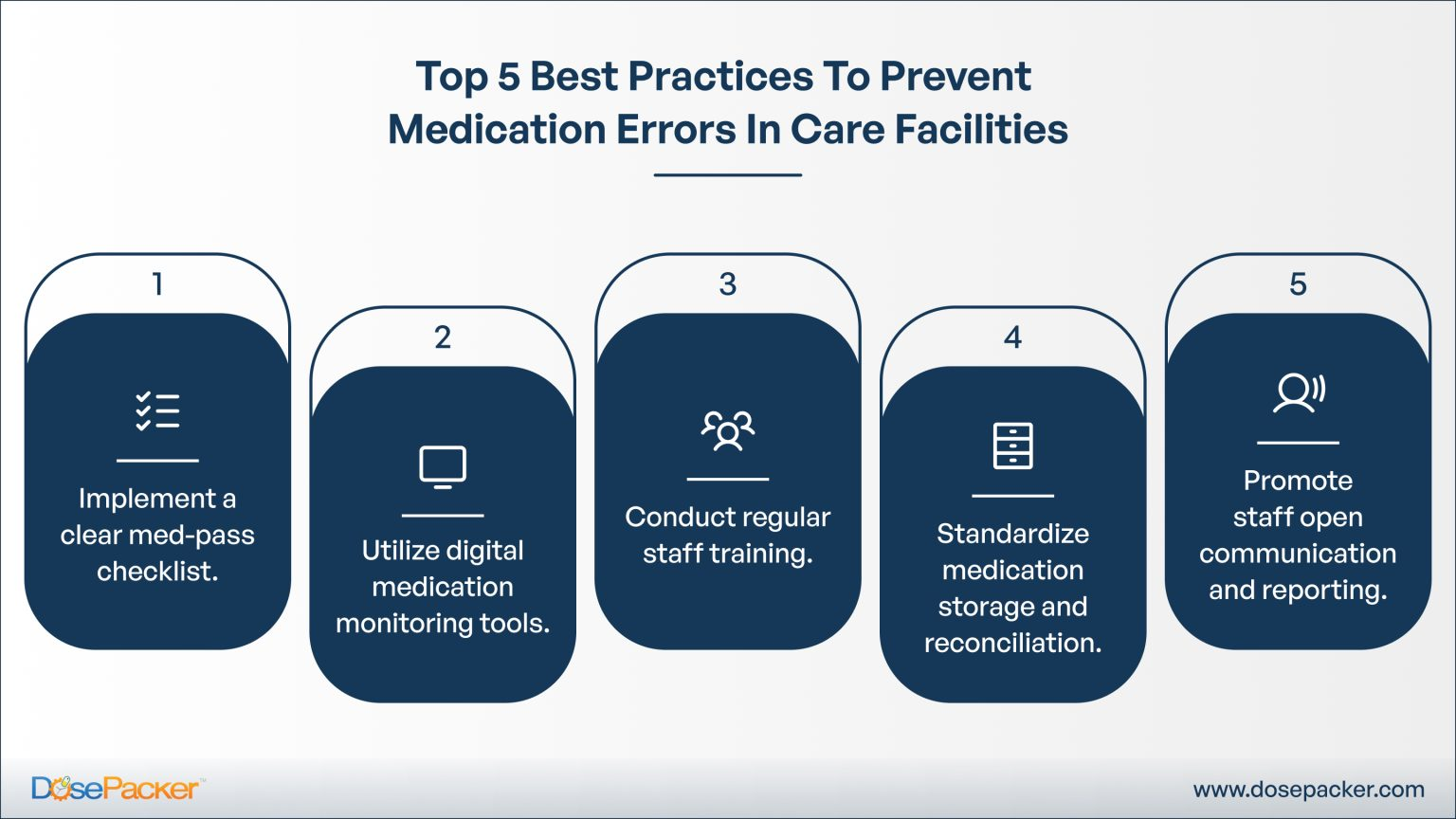
If there’s good news, it’s this: many medical errors are preventable.
At the system level, EHRs with safety features, standardized protocols, and non-punitive reporting systems help catch problems before they reach the patient.
For providers, simulation-based training and ongoing education ensure staff stay sharp and prepared for high-risk scenarios.
Patients, too, play a vital role. By staying engaged, asking questions, double-checking medications, and understanding their treatment plans, they add an extra layer of protection to the process.
The Role of Technology in Reducing Errors
Technology is reshaping modern healthcare, and its impact on safety is already visible.
Electronic Health Records (EHRs) minimize transcription errors and improve data sharing.
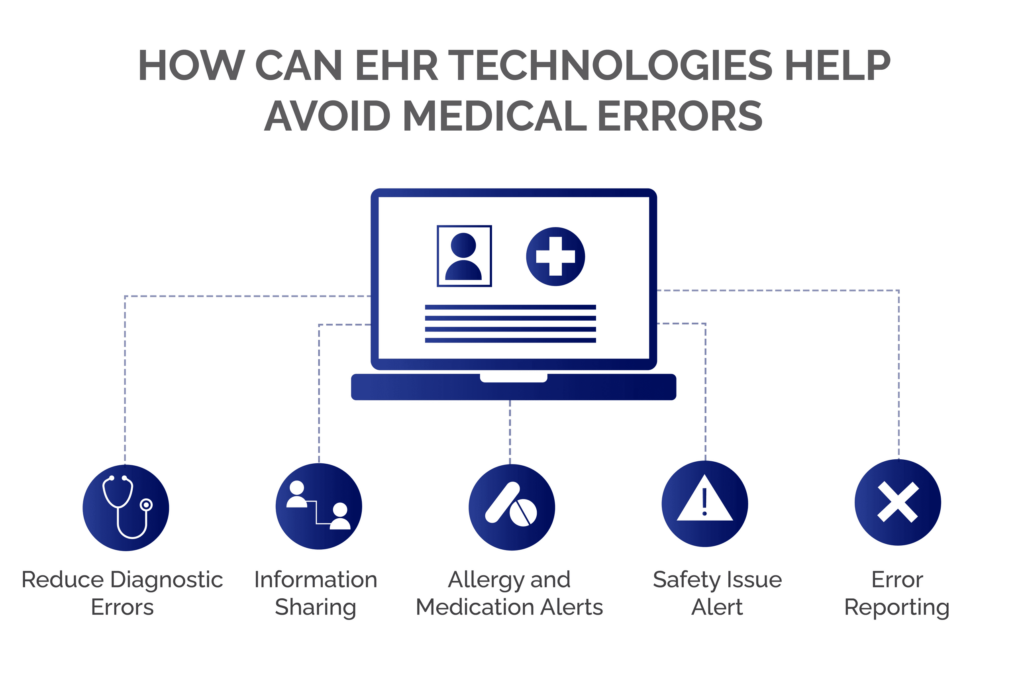
Clinical Decision Support Systems (CDSS) warn doctors of dangerous drug interactions or missing information.
Artificial Intelligence (AI) can scan imaging for early signs of cancer or flag unusual lab patterns.
Telemedicine reduces gaps in care by improving access and preventing delays in diagnosis.
When used effectively, these technologies don’t replace providers; they support them, making the entire system more resilient.
Legal and Ethical Considerations
Medical errors carry legal, financial, and ethical weight. Patients harmed by mistakes often turn to the courts, and diagnostic errors alone account for more than one-third of malpractice payouts in the U.S.
But beyond lawsuits, there’s an ethical responsibility. Providers have a duty to disclose errors openly and honestly. Transparency builds trust and allows patients to make informed decisions about their next steps. Concealing mistakes only deepens harm and damages the reputation of the profession.
Patients also have the right to safe care, full disclosure, and accountability when errors occur. Recognizing and respecting these rights is essential to building a safer, more trustworthy healthcare system.
Medical errors are not isolated mishaps; they’re a systemic challenge affecting millions of Americans every year. From diagnostic mistakes and medication errors to surgical oversights and communication failures, the consequences are real and often tragic.
The solutions, however, are within reach. Providers must commit to continuous learning and open communication, administrators must invest in safe systems and adequate staffing, patients must remain engaged, and policymakers must support accountability measures.
Preventing medical errors is about more than avoiding harm; it’s about building a healthcare culture rooted in safety, transparency, and trust. With collaboration across all levels, the U.S. healthcare system can reduce risks, improve outcomes, and restore confidence in patient care.
Reducing medical errors will require patients to stay informed, providers to practice vigilance, and healthcare leaders to invest in safer systems. Each group has a role to play in making U.S. healthcare safer.

